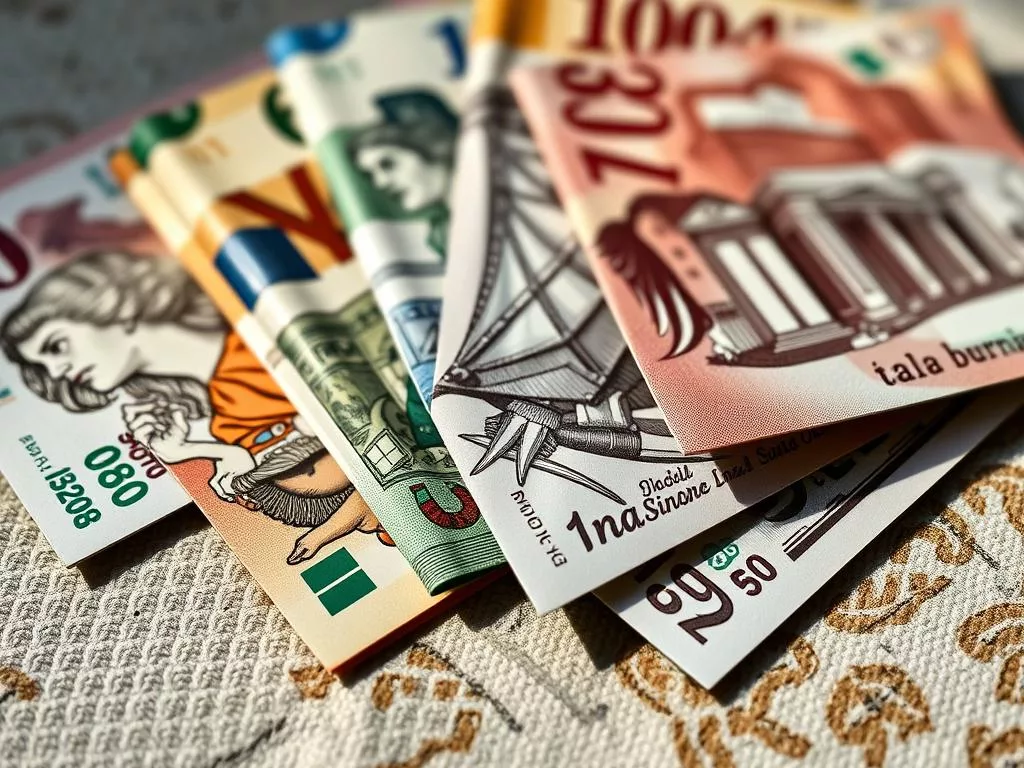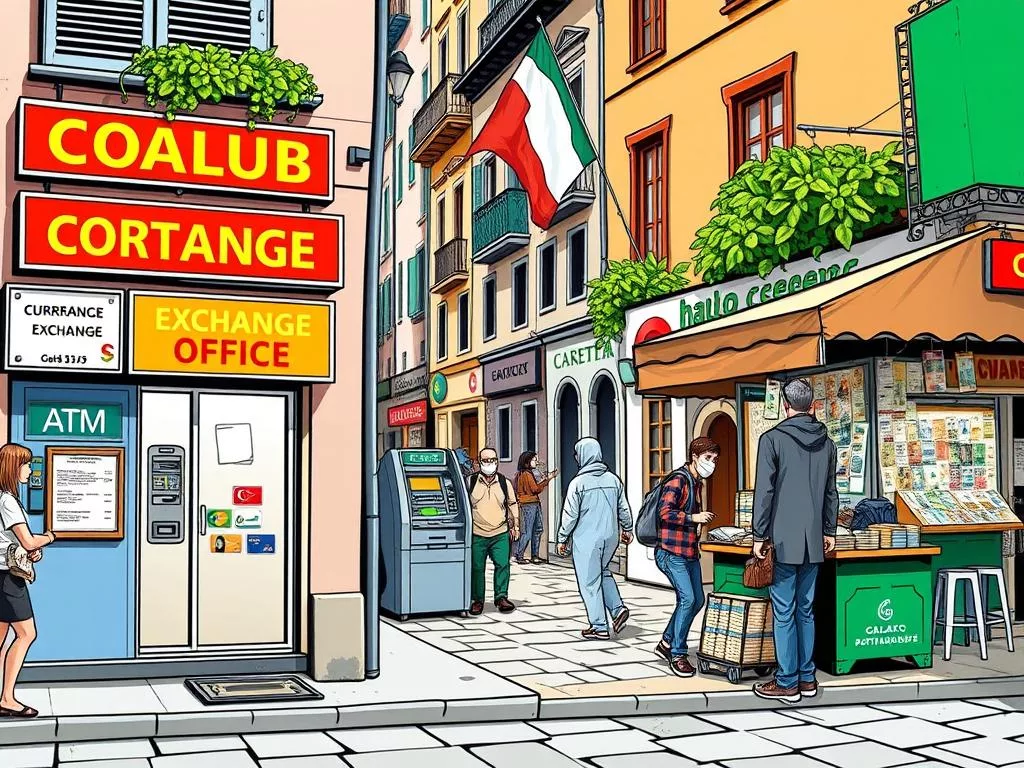Traveling to Italy means you need to know about ATMs. Italy is mostly a cash society. So, understanding how to use ATMs abroad is key to a smooth trip. Knowing the euro, Italy’s currency, is important for managing your money.
With the right ATM knowledge, you can enjoy Italy without money worries. Whether it’s a €2.50 pizza or a €10-20 museum ticket, you’ll be ready. For more on managing your money, see this guide on the best credit card for travel to Italy.
Understanding the Currency in Italy
Italy uses euros (€), the official currency of the eurozone. This replaced the Italian lira in February 2002. The euro has banknotes in 5, 10, 20, 50, and 100 euros. Coins range from 1 cent to 2 euros.
Tourists should know that 200 and 500 euros are rarely used in everyday transactions.
Cash is the main payment method in Italy, more so in smaller towns and villages. Credit and debit cards are more accepted in cities. Visa and Mastercard are widely accepted, but American Express is used in about 45-55% of places. Discover cards are used in only 10-15% of locations.
Travelers should check current exchange rates for their finances. $1 can be exchanged for about €0.92 – €0.93. On the other hand, €1 is worth about $1.08 – $1.09.
To exchange money easily in Italy, exchange it at local banks before you go. Or use bank-affiliated ATMs to avoid high fees from other ATMs. It’s wise to have 100 to 150 euros for daily expenses.

Guide to ATMs in Italy
Italy has a wide network of ATMs, making it simple for visitors to get cash. You can find ATMs almost everywhere in big cities and main squares in small towns. Most ATMs accept Visa and Mastercard debit and credit cards, plus many foreign cards.
Withdrawal limits vary, but usually, you can take between €250 to €1000 at a time. Always check your daily limit, as it can differ. Some ATMs charge up to €5, but some banks, like BNL, offer free withdrawals.
Plan your cash withdrawals carefully. Avoiding airport ATMs can save you money. It’s also smart to withdraw in local currency to avoid bad exchange rates. This advice is shared by many experienced travelers.
Having a backup cash plan is wise. Some ATMs might not work with foreign cards. Stay alert to avoid problems. For more tips on using ATMs in Italy, check out this guide on cash withdrawal.
Options for Accessing Cash in Italy
Travelers in Italy have many ways to get cash. While ATMs are easy, exchanging money in airports or tourist spots can be bad for your wallet. It’s smarter to look for local places with better rates.
Using debit or credit cards from Visa or Mastercard is a good idea. Most places, like hotels and restaurants, take these cards. For those traveling to rural areas, prepaid cards like the Wise Travel Card and Revolut are super helpful.
- Currency Exchange Counters: Available but often have unfavorable rates.
- Travelers’ Checks: Generally discouraged due to limited acceptance.
- Debit/Credit Cards: Widely accepted, though notify your bank before traveling.
- Prepaid Travel Cards: Convenient and easy to use, specially the Wise Travel Card and Revolut.
- ATMs: Commonly found but might incur extra fees from private machines.
Be careful of Dynamic Currency Conversion (DCC), as it can cost you more. It’s best to avoid it. Tell your bank you’re traveling to avoid card problems.
Getting cash from ATMs usually gives you the best rates. This is better than exchanging money in Italy. For more info on how to save money, check out this guide on currency exchange options.

Tips for Using ATMs Safely
When using ATMs in Italy, it’s key to follow safety tips for a secure experience. Choose ATMs in bright, crowded spots to lower risks. Keep an eye on your surroundings and make sure no one is watching you enter your PIN.
Always cover the keypad with your hand when typing your PIN. This simple step can greatly improve your security.
It’s also important to avoid dynamic currency conversion (DCC) when using ATMs. DCC can lead to high fees, sometimes up to 8% to 10%. To save money, choose to use euros and look for accounts or cards with good foreign transaction terms.
Regularly check your bank statements for any unauthorized charges. This can help you catch ATM scams early.
Even though Italy has strict security at ATMs, it’s wise to stay alert. Use ATMs from trusted banks like BNL, Banco BPM, or Intesa Sanpaolo to avoid extra fees and stay safe. For more tips on safe banking while traveling, check out this guide. Being informed and careful can make your financial experience in Italy much better.

